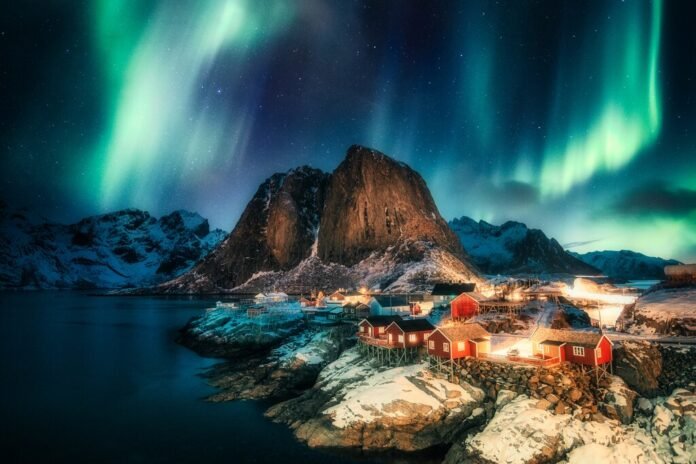Embarking on a journey to witness the mesmerizing Northern Lights is a dream for many adventurers and nature enthusiasts. In this guide, we’ll explore the enchanting world of the Aurora Borealis, its elusive dance across the Arctic skies, and tips for an unforgettable experience.
The Dance of the Northern Lights
The Aurora Borealis, or Northern Lights, is a natural light display that occurs predominantly in high-latitude regions near the Arctic Circle. This celestial spectacle is a result of interactions between charged particles from the sun and the Earth’s magnetic field, creating vibrant curtains of light in the night sky.
1. The Best Time to Witness the Aurora
The Northern Lights are most active during the winter months when the nights are longest. The optimal time for viewing is generally from late September to early April, with peak activity around the equinoxes (March and September).
2. Ideal Locations for Aurora Viewing
Choosing the right location is crucial for a successful Northern Lights experience. Arctic wonderlands such as Tromsø in Norway, Fairbanks in Alaska, and Yellowknife in Canada are renowned for their clear skies and frequent Aurora displays.
3. Understanding Solar Activity
Monitoring solar activity is key to predicting Northern Lights occurrences. Keep an eye on space weather forecasts, specifically the KP index, which indicates the geomagnetic activity level. Higher KP values generally lead to more vibrant Aurora displays.
Preparing for Your Aurora Expedition
Chasing the Northern Lights requires careful planning to maximize your chances of witnessing this celestial phenomenon. Consider the following tips to ensure a successful Aurora expedition.
1. Pack Warm and Layered Clothing
Arctic temperatures can be extremely cold, especially during Northern Lights viewing. Dress in layers to stay warm and pack insulated clothing, waterproof boots, and thermal accessories to protect against the chilly nights.
2. Choose Dark and Clear Nights
For the best Aurora visibility, choose nights with minimal light pollution and clear skies. Avoid full moon nights, as the moon’s brightness can diminish the visibility of the Northern Lights. Opt for locations away from city lights for a more immersive experience.
3. Bring the Right Photography Gear
Capturing the Northern Lights is a rewarding endeavor, but it requires the right photography equipment. Bring a sturdy tripod, a camera with manual settings, and a fast lens with a wide aperture. Familiarize yourself with long-exposure photography techniques for optimal results.
4. Be Patient and Stay Alert
Northern Lights displays can be unpredictable, and patience is key. Stay alert and be prepared to spend several hours outdoors, as the lights may appear suddenly and intensify over time. A comfortable camping chair and warm beverages can enhance your waiting experience.
Experiencing the Magic of the Aurora
As you stand beneath the dancing colors of the Aurora Borealis, you’ll witness one of nature’s most awe-inspiring displays. The Arctic wonderlands offer not only a visual feast of vibrant lights but also a profound connection to the Earth’s magnetic beauty.
Whether you’re an avid photographer or a nature enthusiast, chasing the Northern Lights is an adventure that promises to leave you with memories to last a lifetime. With proper preparation and a sense of wonder, you can immerse yourself in the celestial dance of the Aurora Borealis and marvel at the magic painted across the Arctic skies.












